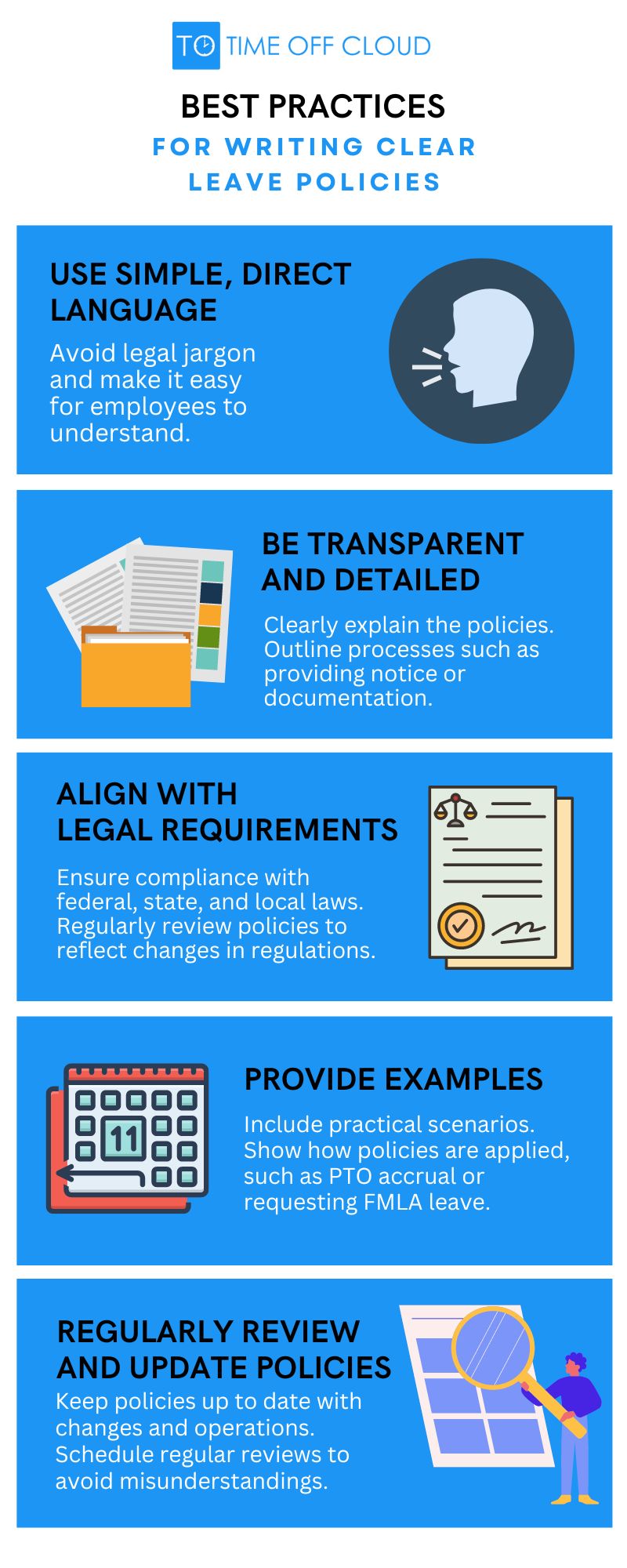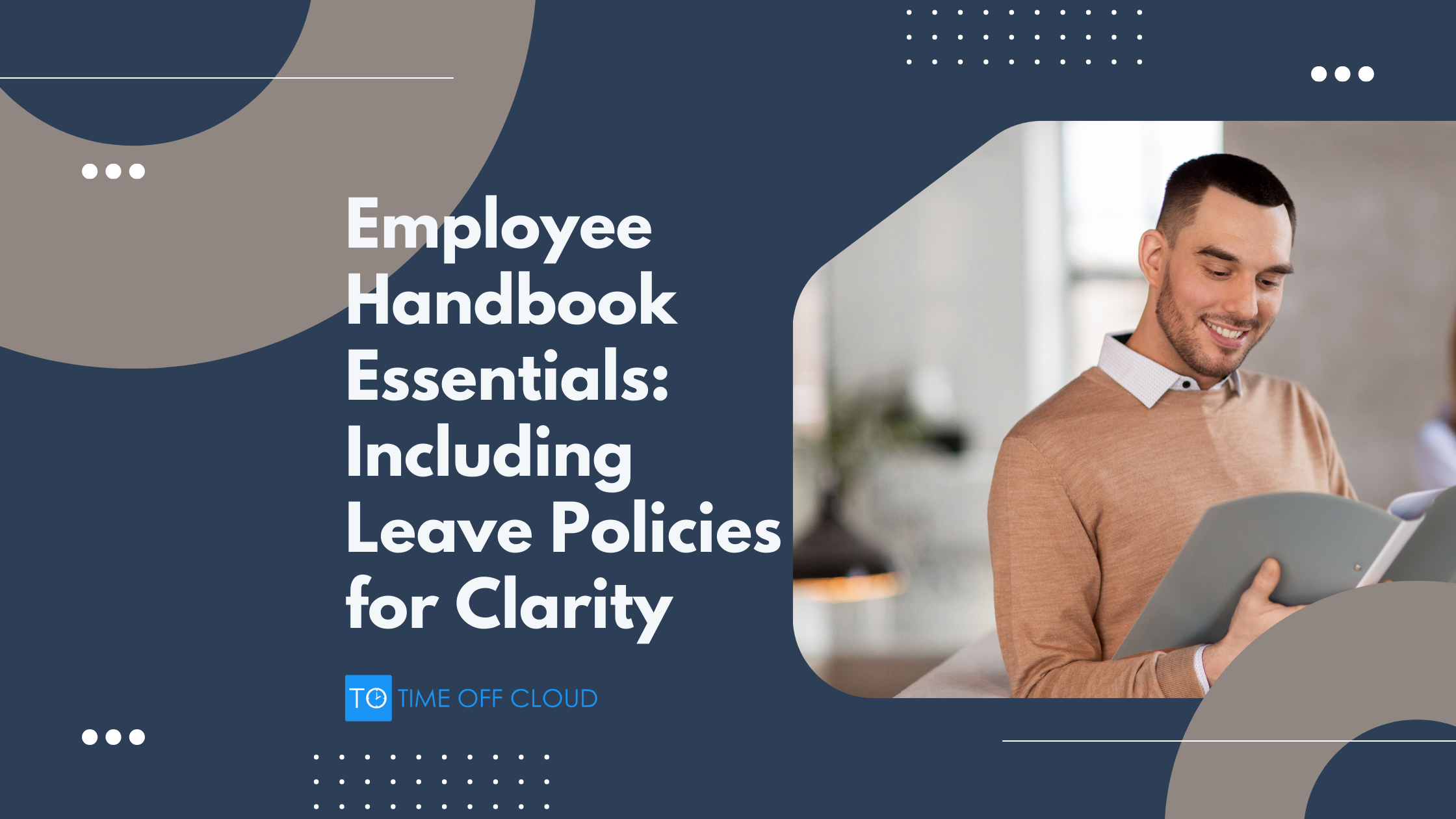An employee handbook is an essential tool for any organization. It serves as a central reference guide for employees and outlines the company’s expectations, policies, and benefits. One of the most critical sections of the handbook is the leave policy, as it directly impacts employees’ work-life balance, health, and overall satisfaction. Having clear, comprehensive leave policies ensures that employees understand their entitlements and feel supported when they need time off.
In this post, we’ll explore the essentials of creating effective leave policies for your employee handbook, ensuring clarity, consistency, and compliance with legal requirements.
Why Leave Policies Matter
Leave policies are about more than just offering time off—they help foster a culture of trust, support, and work-life balance. Clear leave policies can:
- Reduce confusion: Employees know exactly how much time off they have and how to request it.
- Improve morale: When employees feel supported in taking time off, they’re more likely to be satisfied with their job and loyal to the company.
- Ensure compliance: Well-documented policies help the company comply with federal, state, and local labor laws.
- Streamline management: Clear guidelines make it easier for managers to approve and track time off requests, ensuring fairness and consistency across the organization.
Key Components of Leave Policies
To ensure that your leave policies are clear and comprehensive, it’s important to cover several key areas. Below are the essential elements that should be included in your employee handbook’s leave policy section.
1. Paid Time Off (PTO)
Paid Time Off (PTO) is a common leave benefit that provides employees with paid leave to be used at their discretion. It typically covers vacation, personal days, and short-term illnesses.
- Accrual and Use: Clearly explain how PTO is accrued, whether it’s based on hours worked, employment length, or a set annual amount. Include details on how employees can use their PTO (e.g., advanced notice requirements or blackout dates).
- Rollover Policy: State whether unused PTO can be carried over to the next year or if there’s a “use-it-or-lose-it” policy.
- PTO Caps: Some companies limit how much PTO can be accumulated. Clarify any caps on PTO balances.
Example:
“Full-time employees accrue 15 days of PTO per year, starting from their first day of employment. PTO can be used for vacation, personal days, or short-term illness. Employees may carry over up to five unused PTO days to the next calendar year.”
2. Sick Leave
Sick leave is dedicated time off for employees who are ill, injured, or need to attend medical appointments. This type of leave may also extend to family medical needs, depending on the company’s policy or applicable laws.
- Eligibility: Clarify who is eligible for sick leave (full-time, part-time, or temporary employees).
- Documentation: Indicate whether a doctor’s note is required for extended absences.
- State and Local Requirements: Make sure your sick leave policy complies with local regulations, as sick leave laws vary by state and municipality.
- Accrual: Define how sick leave is accrued and whether unused sick days carry over into the next year or are forfeited.
- Paid or Unpaid: Specify whether sick leave is paid or unpaid and provide details on any differences between employee classifications (e.g., full-time vs. part-time).
Example:
“Employees are entitled to 7 paid sick days per year. For absences longer than three consecutive days, a doctor’s note is required.”
3. Maternity, Paternity, and Parental Leave
Many companies offer specific maternity, paternity, or parental leave policies, either paid or unpaid, to accommodate new parents. While FMLA covers parental leave, many companies go beyond this by offering additional paid time off.
- Eligibility: Define who qualifies for maternity, paternity, or parental leave.
- Duration: Specify how much leave is available and whether it’s paid or unpaid.
- Coordination with FMLA: If applicable, clarify how company-provided leave aligns with FMLA leave.
- Notice Requirements: Specify how far in advance employees need to notify their employer of their intention to take maternity, paternity, or parental leave.
Example:
“New parents are eligible for up to 8 weeks of paid parental leave following the birth or adoption of a child. This leave can be taken in addition to any FMLA leave.”
4. Bereavement Leave
Bereavement leave allows employees time off to grieve and handle arrangements after the death of a family member.
- Length of Leave: Outline how many days of leave are provided and whether additional time can be requested.
- Who Qualifies: Define the family members covered under the policy (e.g., spouse, parents, siblings).
Example:
“Employees are eligible for up to 5 days of paid bereavement leave following the death of an immediate family member.”
5. Jury Duty and Court Leave
Jury duty is a civic responsibility, and companies typically provide leave for employees who are called to serve.
- Paid or Unpaid: Specify whether jury duty leave is paid or unpaid.
- Notice Requirements: Detail how much notice employees should give when they are called for jury duty.
Example:
“Employees will receive up to 3 days of paid leave for jury duty. Employees must provide a copy of the jury summons to their manager as soon as possible.”
6. Military Leave
Military leave provides job protection for employees who are members of the armed forces and are called to active duty.
- Reemployment Rights: Include information about employees’ rights to return to their position after military service, in accordance with the Uniformed Services Employment and Reemployment Rights Act (USERRA).
- Paid or Unpaid: Clarify whether military leave is paid or unpaid.
Example:
“Employees who are called to active military duty will receive unpaid leave and are entitled to reinstatement to their position under USERRA guidelines.”
Best Practices for Writing Clear Leave Policies
Writing clear leave policies is crucial to avoiding misunderstandings and ensuring employees know their rights. Here are a few best practices:
1. Use Simple, Direct Language
Avoid legal jargon or overly complex terms. Use simple, straightforward language that employees can easily understand. For example, instead of saying “accrual shall commence,” say “PTO starts accumulating.”
2. Be Transparent and Detailed
Clearly explain how leave policies work, including any processes employees need to follow, such as providing notice or documentation. The more transparent your policy, the less confusion there will be.
3. Align with Legal Requirements
Make sure your leave policies comply with federal, state, and local laws. Regularly review and update your policies to reflect any changes in labor regulations, such as new paid family leave laws.
4. Provide Examples
Use examples or scenarios to clarify how leave policies are applied. For instance, include an example of how PTO is accrued over a year or how an employee can request FMLA leave.
5. Regularly Review and Update Policies
Leave policies should evolve alongside changes in company operations, employee needs, and legal requirements. Schedule regular reviews of your leave policies to ensure they remain relevant and compliant with any new labor laws or company changes. This proactive approach helps prevent misunderstandings and keeps employees informed about their rights and options.
Check out the infographic below for any easy resource to help you plan your leave policy.

Final Thoughts
Including clear, detailed leave policies in your employee handbook is essential for setting the right expectations and ensuring that employees understand their rights and benefits. By taking the time to craft comprehensive and compliant leave policies, you can create a more supportive and transparent work environment.
By creating well-defined and accessible leave policies, you’re supporting your employees’ well-being, reducing administrative headaches, and ensuring legal compliance.
Contact Us
If you’re looking for an efficient way to manage employee leave requests and balances, Time Off Cloud offers an intuitive solution that simplifies the process for both employees and managers. Contact us to learn how we can help streamline your leave management, or book your free trial now.


